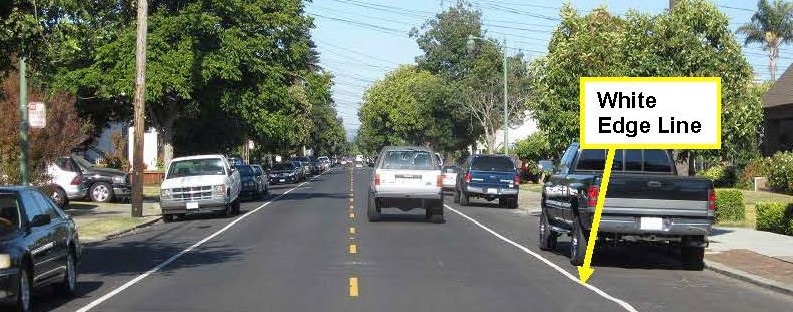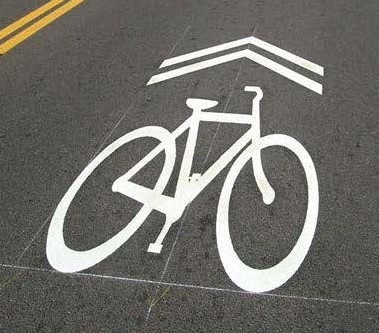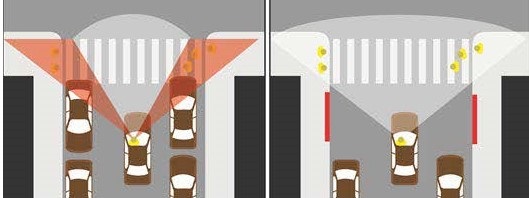The City of Alameda Public Works Department received various concerns/requests regarding Maitland Drive, between Mecartney Road and Harbor Bay Parkway. We have completed a review and are providing our findings/recommendations below. Please note that this information has been divided into the following sections:
A. Recommendations that are moving forward.
B. Other requests (that we reviewed but do not recommend).
C. (Information regarding) daylighting
A. RECOMMENDATIONS THAT ARE MOVING FORWARD
This section includes improvements that we plan to implement. These recommendations are not appealable.
1. Along Maitland Dr. Police enforcement. Our analysis of the speed data found that there are individuals that are speeding, and the proper way to address those persons is with enforcement. This will help to educate motorists of the existing rules of the road on Maitland Dr. and in this area.
2. Along Maitland Dr. The installation of white edge lines along the right side of travel lanes. Motorists may speed up when they feel that they have more room and are more comfortable to do so, i.e. when the lane is wider. By painting the white lines, it visually narrows the lane and psychologically causes them to slow down. We have implemented this strategy at various locations, such as Fernside Blvd, Encinal Ave, and Santa Clara Ave.
The lines will also help motorists to stay within the lane and not drift into parked vehicles. Please note this may not address distracted drivers or drivers under the influence and those motorists are ultimately responsible for their behavior.
Please see Figure 1 for an example of the white edge lines.
Figure 1. Example of White Edge Line

3. Along Maitland Dr. Install bicycle sharrows. Bicycle “Sharrows”, or Bicycle Shared Lane markings, are markings on the roadway to (A) indicate that the street is a bicycle route and (B) remind motorists and bicyclists that they must share the road. Alameda’s Bike Master Plan shows this corridor as a proposed bike route, and the installation of sharrows would be an appropriate improvement. Please see Figure 2 for an example.
Figure 2. Bicycle Sharrow

4. Intersection of Maitland / Mecarney / Melrose. Installation of all-way plaques. These currently do not exist at this location.
Intersection of Maitland / Mecartney / Melrose. Conceptually recommend the installation of marked crosswalks across all legs of the intersection, installation of pedestrian ramps at each end of all crosswalks, and daylight the intersection. We are recommending these improvements to address concerns regarding pedestrian access and connectivity from corner to corner. The pedestrian ramps are required per the Americans with Disabilities Act. The new pedestrian ramps and daylighting will ultimately result in parking removal.
Note, all of these improvements are provided as a conceptual recommendation. The actual details of this project will be designed at a later time. Please see Section C for more information regarding daylighting.
5. Near Mecartney and near Harbor Bay Parkway. Relocate speed limit signs for better visibility. This will help clarify the speed limit along Maitland Dr.
6. Intersection of Maitland / Fitchburg. Install new speed limit sign facing motorists who are coming from Harbor Bay Parkway. Normally, one speed limit sign is sufficient at the beginnings of corridors. However, the change in the speed limit and transition to a residential area may not be readily apparent. So, we are recommending a second speed limit sign after the bend to help address any confusion regarding the speed limit.
7. Intersection of Maitland / Fitchburg. Improvement to visibility through the painting of red curbs. This will result in the removal of five parking spaces.
We initially received a concern regarding visibility at Maitland Dr / Fitchburg Ave, mainly due to buses at the bus stop. We reached out to AC Transit regarding possible relocation of the bus stop, going towards Harbor Bay Pkwy, from the near side (of the intersection) to the far side, but they did not recommend it due to the existing tree line and lack of concrete landing area for disabled riders. Additionally, they are reviewing whether service to Maitland Dr will be discontinued in the future or not. If the latter occurs, then situation will address itself.
Nevertheless, it is currently normal protocol, during these types of reviews, for us to implement improvements to visibility (also called daylighting) along streets that are classified as arterials or collectors. Maitland Dr is classified as a collector, and therefore, we are recommending to prohibit parking within 20’ of the corners on Maitland Dr and Fitchburg Ave.
This will improve the visibility of motorists, bicyclists, and pedestrians and will result in the removal of five parking spaces. Please see Section C for more information regarding daylighting.
B. OTHER REQUESTS
We reviewed these requests, but do not recommend moving forward with them. These recommendations are not appealable.
1. Electronic Speed Feedback Signs. Electronic speed feedback signs are usually accompanied by the speed limit signs and help to remind motorists of the speed limit while displaying their current speed. This device is typically only effective when the 85th percentile speeds are high, and would be ineffective at this location. The white edge lines are a better solution for this corridor.
2. Bike Lanes. The existing street width is insufficient to properly provide travel lanes, parking lanes, and bicycle lanes. Additionally, The City’s Bike Master Plan shows this corridor as a proposed bike route as opposed to proposed bike lanes. We are recommending the installation of bicycle sharrows instead.
3. Crosswalks at Fitchburg. For this review, we collected pedestrian crossing data and found that the usage was not sufficient for the marking of crosswalks at this location. Further, the potential removal of the bus stops may reduce the amount of crossings, making the marked crosswalks less appropriate.
4. Traffic Signal at Fitchburg. The State Department of Transportation provides various quantitative and qualitative criteria that must be met for the installation of a traffic signal. This intersection did not meet those criteria, and we do not recommend the installation.
C. DAYLIGHTING
Daylighting provides improvements to visibility for motorists, bicyclists, and pedestrians. The existing condition allows motorists to park vehicles near the intersection, resulting in blind spots and increased collisions.
The Alameda Vision Zero Policy declares that public safety is the highest priority in managing transportation system, with the goal of reducing and eventually eliminating fatalities and severe injuries among all road users. Alameda’s Policy for Improvements to Visibility (Daylighting) helps fulfill this goal by calling for sufficient visibility at intersections, enabling drivers to see motor vehicle and bicycle traffic in the cross street, as well as pedestrians entering the crosswalk. The figure below illustrates how parked vehicles can narrow visibility, making it impossible for drivers to see people stepping into the crosswalk.

(Source: San Francisco Municipal Transportation Agency)
The Daylighting Policy allows for parking to be prohibited within 20 feet of corners to increase visibility and increase safety at any intersection. It also requires visibility enhancements on busier streets, stating that “no parking shall be permitted within 20 feet of intersections along collector and arterial streets” as defined by the Mobility Element of the General Plan.
Pursuant of Alameda Municipal Codes 8-7.1 and 8-8.5, the Public Works Director is authorized to remove or change parking to achieve the goals of the Vision Zero Policy as well as the Alameda General Plan Safety Element Policy SN-5, which requires Vision Zero safety measures. The decision to remove parking in order to improve visibility is not appealable.
Questions?
If you have any questions, please feel free to contact Alan Ta, Assistant Engineer, at ata@alamedaca.gov.